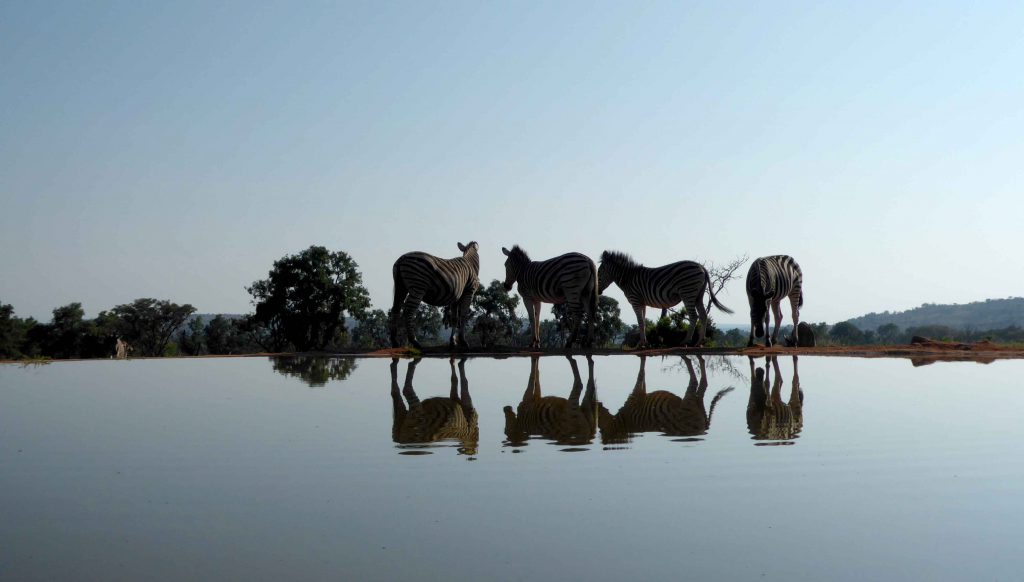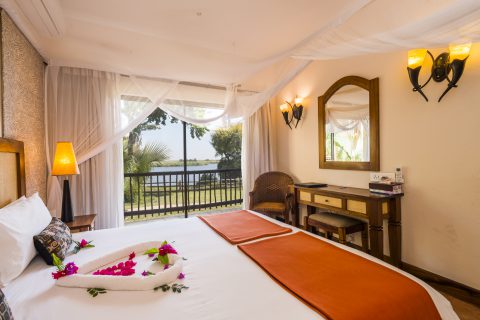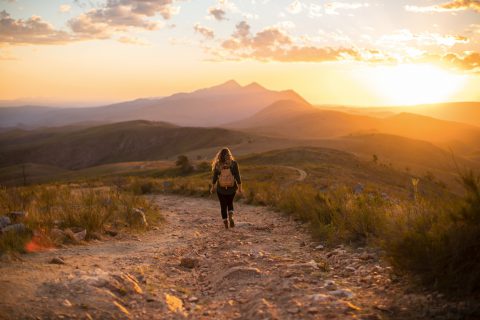Financial Mail Travel
Overland And Underground
Sleeping in isn’t against the rules, but you’d be pretty daft to exchange an opportunity to glimpse leopards at dawn for a few extra hours in bed. No matter how cosy your quarters.
And so, while the sky is still the colour of a fading bruise and the clear Limpopo air is still cold and crisp enough to nip at every exposed bit of flesh, we are all – including the hipster millennial who yawns that he’s never been up before the sun – already piled into the Land Cruiser, eyes peeled, alert, and hopeful. There’s that buzz of expectation one gets on a game drive filled with possibility as Fritz, our khaki-clad ranger steers the vehicle south and we set off into the dim predawn as another layer of night peels away, revealing the orange sky of dawn.
We’re in Welgevonden Game Reserve, a 37 000-hectare sprawl of lush riparian thicket, grass-covered valleys and rocky ravines – plus magnificent mountains and hills that rise to flattened plateaus. There’s a wild, raw harshness to the terrain, too, a beauty that hits you in the chest, tugs at you from an ancient place.
It’s difficult to imagine that this private reserve situated roughly midway between Bela-Bela and the Botswana border was only pieced together from a motley assortment of former farms in 1993. It’s in the heart of the Waterberg, a 4 000-square kilometre region of Limpopo that, since 2001, has been a UNESCO-accredited biosphere reserve. As suggested by the name of the region, there is an abundance of water here, but high rainfall is also responsible for stripping the soil of nutrients, rendering it agriculturally poor. The Waterberg is in fact where Paul Kruger assigned land to political upstarts, punishing them with the daunting prospect of farming hostile land.
What’s dire for agriculture, though, has been a boon for conservation. In the 25 years since the land was returned to nature and stocked with animals that once roamed here, the reserve has transformed into an Eden boasting considerable conservation statistics. One high point is that it has probably the largest population of white rhino of any private reserve in Africa – poachers simply don’t get in. Welgevonden, which borders Marakele National Park, has an infallible security system that’s entirely focused on animal wellbeing. Resident populations have never known any form of hunting and are generally undaunted by humans.
The result is that animals are not only plentiful, but once spotted they’re pretty easy to spend quality time with, which is precisely what we intend doing on this cool morning, just as the sky starts to streak with gold.
By this stage, having been in the reserve all of 16 hours, we have already seen lions and plains game and zebra aplenty, and there’ve been groups of elephants and assorted rhinos hanging around at the waterhole right in front of the lodge. It’s the no-nonsense lady with the binoculars and bird book who decides our agenda. She’s never seen a leopard in the wild, so that’s what’s foremost on her wish list.
Finding a leopard in the Welgevonden terrain seems unlikely, though. The reserve’s crag-folded mountains are studded with rocky ledges and shadowy crevices – there are loads of places for shy leopards to hide from view.
But Fritz is dogged and up for the challenge. And soon we’re pausing to look for paw prints, and learning how to listen for the alarm call of startled francolins that might give away a leopard’s position in the bush.
Something does in fact stir and there’s a minor commotion, a rustle in some high grass that momentarily stops us from breathing.
Instead of leopard, though, it’s a jackal that suddenly pokes its head above the bushes – it spots us and bolts across the savannah.
We continue our hapless listening and sniffing and squinting, and Fritz distracts us with a set of lion tracks he discovers in the sand. They’re huge and fresh and… Just as we are about to set off in pursuit of a different sort of cat, the leopard we’d hoped for appears, conjured as if by sheer will, sauntering through the bushes just metres away.
Suddenly Fritz is reversing and veering off-road to give our quarry some space, and then we follow him at a respectful distance. A happy hush falls over the vehicle, a collective silent sigh of relief punctuated by the rapid clicks of cameras as we watch, entranced and disbelieving; we’ve found the needle in a haystack.
Once we’ve had our fill of watching the leopard – first pouncing up a tree and then lazing on a branch, lying in full repose – we continue south, this time following those large lion tracks. The paw prints take us through a narrow valley dense with vegetation, steep verges rising up on either side of us. When we emerge from the valley’s deep shadows, we enter a breathtakingly layered landscape that looks like something out of a Pierneef painting, only with zebra and wildebeest scattered across the plains and rhino, red hartebeest and rhebok punctuating the background, while the occasional jackal streaks across the horizon.
Eventually we meet up with a lioness and her cub, and we follow them for a while until they finally clamber up a rocky hill and disappear over a ridge, prompting our search for a spot to pause for coffee and rusks before we head back towards the lodge – a small, exclusive beauty called Mhondoro. It overlooks a wide-open patch of grassland from a slightly elevated position that gives the sensation of constantly looking out towards eternity, while a waterhole in front of the main terrace draws a constant stream of thirsty animals. The biggest novelty of all is the cool subterranean hide at the edge of the waterhole – it’s reached via a 65-metre underground tunnel that links to the lodge. So, after lunch I slink down behind the bar and find my way to a prime spot for impossibly close-up views of elephant and zebra, baboons and warthogs. And, most rewarding of all, a hefty rhino with a baby at her side.
As the afternoon starts to cool, we’re once again trundling into the Land Cruiser and setting off in search of predators. When we return, it’s time to settle in for a feast around a large fire in the boma where it’s relaxed enough for me to kick off my shoes and dig my feet into the sand. There’s oxtail cooked in a black potjie and chunky steaks roasted over the fire, there’s angelic singing and gin-and-tonics served with a heavy hand, and all the time, someone’s telling adventuresome tales of the day’s best sightings.
After dinner, I escape to the private watchtower adjacent my room and I stand there for a brief eternity, staring into the glittering darkness of a cloudless sky. I listen, spellbound, to the howls and roars and screams that permeate the night.






 Sign-up and receive the Business Media MAGS newsletter OR SA Mining newsletter straight to your inbox.
Sign-up and receive the Business Media MAGS newsletter OR SA Mining newsletter straight to your inbox.